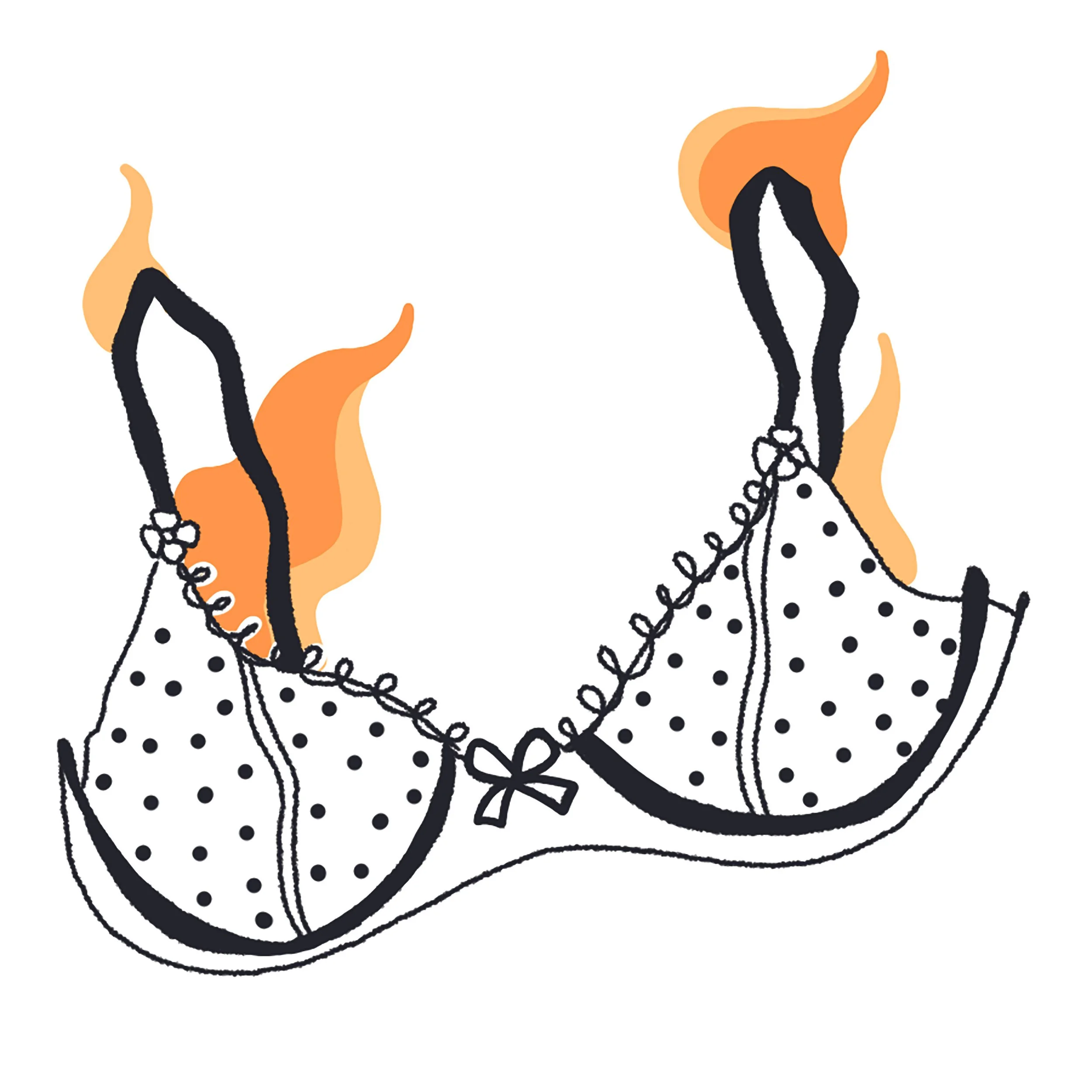THE MYTH OF BRA BURNING
BY CLAIRE SCHIOPOTA ILLUSTRATIONS BY CASSIDY WOODS
The fight for women’s rights is an ongoing battle depicted throughout America’s history, but a closer look shows the physical ways women defend their place at the table. Whether it is for suffrage or space in the workplace, women have shown their perseverance and passion through protesting in some of the most public spaces.
The 1969 Miss America protest in Atlantic City, New Jersey, was no different, but the results of the protest led to wide-ranging misinformation that has held consistent through time. Despite this distracting myth built by the media, the impact of the protest has empowered many movements since then.
Katherine Jellison, professor of history at Ohio University, said the Miss America protest was led by a group of women from New York who had previously worked on protesting with the Civil Rights Movement. Impassioned by their success, the women decided to use the same strategies to fight for their own freedoms.
“[The women] would talk and realize that the personal was political,” Jellison said. “That was the slogan of the radical feminists of the 1960s. Maybe jealousy of one another is not a personal problem. It is part of our political and social system … We don’t have to be that way. We can rethink what it means to be a woman in 1960s America.”
Street theater was a popular form of protesting during the Civil Rights Movement for its direct action and large audiences. The protest was the first time the feminist movement used street theater, and the result was where the bra-burning myth originated: the freedom trash can.
The freedom trash can served as symbolism for the constraints women felt living in America and the box they felt they were being put into. They threw items into the can that represented those feelings, like bras and eyelash curlers.
“They had a trash can out here, and this is in Atlantic City, New Jersey, on the boardwalk,” Jellison said. “Because it is the boardwalk, setting anything on fire on this wooden structure was prohibited, so they never lit anything there.”
Though the women may not have lit anything on fire, a story caught flames. The media of the time controlled the narrative of these radical feminists and trivialized their movement through this bra-burning mythology.
Beth Driehaus, a former Honors Tutorial College student at Ohio U who studied under Jellison, followed the media trail for her thesis in 1997. Driehaus’ research found cable news outlets would dichotomize issues for easy consumption to fit into the short newscast of television in 1969, when 24-hour news was not yet in existence.
“Because they had only 24 minutes, the crafting of those narratives became more pointed,” Driehaus said. “I think that today’s media does that — the same thing … I think they do it in a way that is specific [to their] channels.”
As newspapers become less popular, Driehaus fears the space to provide thoughtful discourse and analysis, as well as examination of every side of an issue, could fall to the past. She believes the proliferation of talk radio and social media websites of today could continue to impact perceptions of women’s movements for years to come.
Others, like Kennedy Huntsman, a senior studying political science and women’s gender and sexuality studies at Ohio U, have seen the positive results of the Miss America protests nonetheless.
As Ohio U’s Student Senate women’s affairs commissioner and senator, Huntsman works on Take Back the Night, an annual event at Ohio U designed to promote awareness of sexual and domestic violence through a focus on the survivors’ experience. Huntsman thinks the Miss America protest slogan, “the personal is political,” still reigns true in how people organize protests today.
“There are people who share their stories, who come forward [at Take Back the Night] and tell the most gut-wrenching things … then proceed to march with a group of people who are there to support you,” Huntsman said. “It’s a very personal event, but it’s also meant to be a political statement and a social statement.”
Other women’s protests, in Athens and throughout America, have used similar messaging to share a political statement. Some have even used tangible items, just like the ones thrown in the freedom trash can. Street theater as a tool of the women’s movement is far from over in protesting to come.
“Today, women protesting in dramatic and high-profile ways is nothing new,” Jellison said. “I would hope [this would] give them some courage to know that they aren’t inventing the wheel, and there’s a long, proud tradition and maybe we could learn or relearn some of these strategies.”
